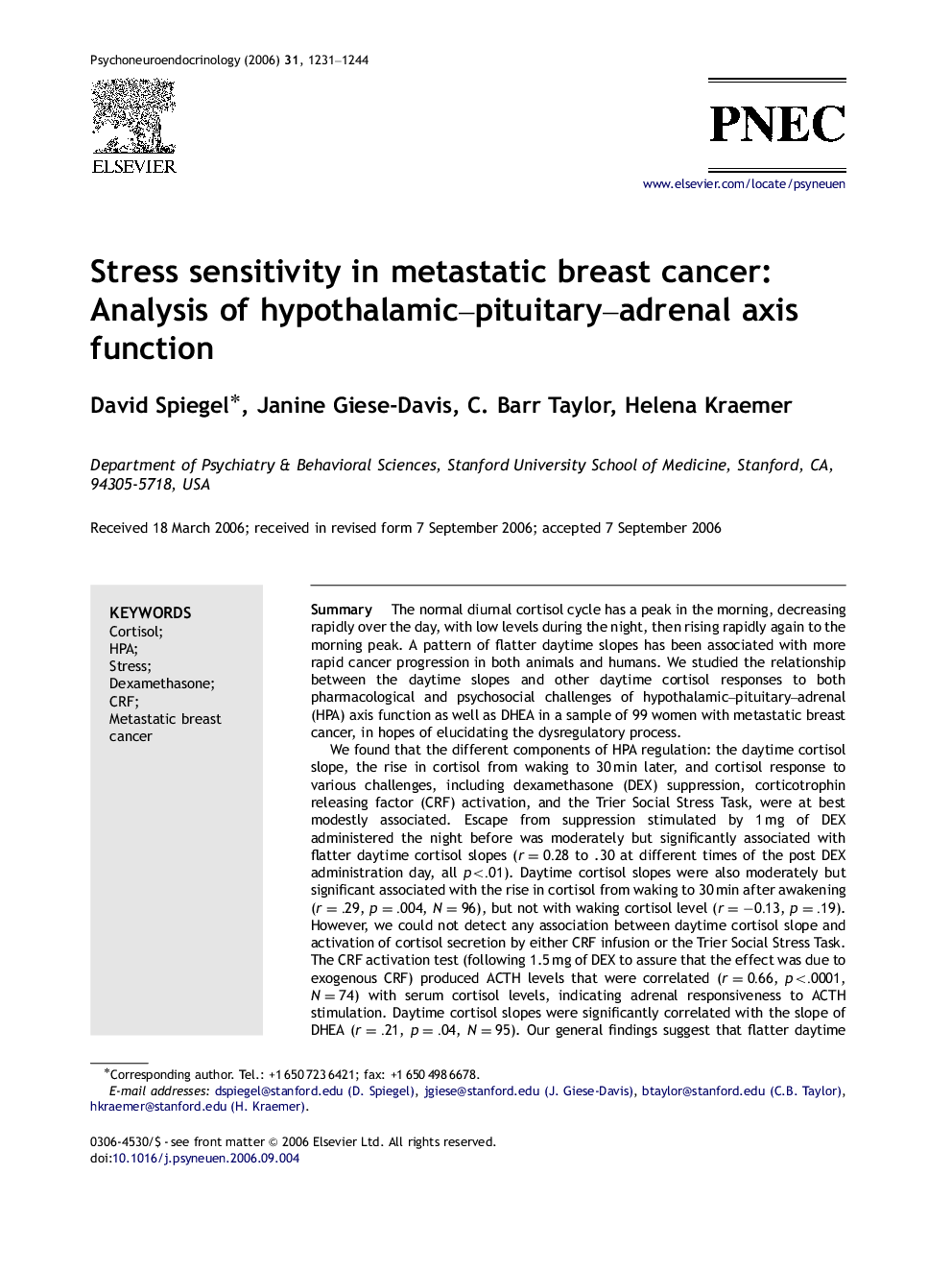| کد مقاله | کد نشریه | سال انتشار | مقاله انگلیسی | نسخه تمام متن |
|---|---|---|---|---|
| 337455 | 547544 | 2006 | 14 صفحه PDF | دانلود رایگان |

SummaryThe normal diurnal cortisol cycle has a peak in the morning, decreasing rapidly over the day, with low levels during the night, then rising rapidly again to the morning peak. A pattern of flatter daytime slopes has been associated with more rapid cancer progression in both animals and humans. We studied the relationship between the daytime slopes and other daytime cortisol responses to both pharmacological and psychosocial challenges of hypothalamic–pituitary–adrenal (HPA) axis function as well as DHEA in a sample of 99 women with metastatic breast cancer, in hopes of elucidating the dysregulatory process.We found that the different components of HPA regulation: the daytime cortisol slope, the rise in cortisol from waking to 30 min later, and cortisol response to various challenges, including dexamethasone (DEX) suppression, corticotrophin releasing factor (CRF) activation, and the Trier Social Stress Task, were at best modestly associated. Escape from suppression stimulated by 1 mg of DEX administered the night before was moderately but significantly associated with flatter daytime cortisol slopes (r=0.28r=0.28 to .30 at different times of the post DEX administration day, all p<.01p<.01). Daytime cortisol slopes were also moderately but significant associated with the rise in cortisol from waking to 30 min after awakening (r=.29r=.29, p=.004p=.004, N=96N=96), but not with waking cortisol level (r=-0.13r=-0.13, p=.19p=.19). However, we could not detect any association between daytime cortisol slope and activation of cortisol secretion by either CRF infusion or the Trier Social Stress Task. The CRF activation test (following 1.5 mg of DEX to assure that the effect was due to exogenous CRF) produced ACTH levels that were correlated (r=0.66r=0.66, p<.0001p<.0001, N=74N=74) with serum cortisol levels, indicating adrenal responsiveness to ACTH stimulation. Daytime cortisol slopes were significantly correlated with the slope of DHEA (r=.21r=.21, p=.04p=.04, N=95N=95). Our general findings suggest that flatter daytime cortisol slopes among metastatic breast cancer patients may be related to disrupted feedback inhibition rather than hypersensitivity in response to stimulation.
Journal: Psychoneuroendocrinology - Volume 31, Issue 10, November 2006, Pages 1231–1244